The Internet has undergone a remarkable transformation, fundamentally altering the way we communicate and engage with our social interactions. As we navigate through our daily routines, the tools at our disposal are evolving to align with the demands of this new digital era. Among these tools, web browsers serve as crucial gateways to our online lives, facilitating not only social connections but also financial transactions.
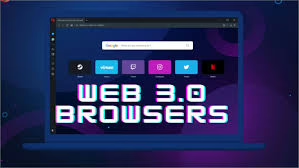
At first glance, traditional web browsers such as Chrome and Safari may seem quite similar to newer Web3 browsers like Maxthon. In fact, Maxthon is built on the Chromium platform and aims to replicate many of the familiar features found in established Web2 browsers. Yet, there is a significant distinction: Web3 browsers unlock a plethora of opportunities for users to engage in digital economies and interact seamlessly with decentralised applications (dApps).
In this narrative, we will delve into the realm of Web3 browsers—examining how they differ from their Web2 predecessors. We will explore some of the leading options available in the market today and highlight the unique features that set them apart.
Now, let’s clarify what exactly Web3 entails: it represents an advanced phase of internet development—a decentralised network characterised by open protocols and applications that function on public blockchains. As implied by its name, Web3 signifies the third evolution in an ever-changing technological landscape. The initial iteration, known as Web1, was primarily composed of static content—think simple text pages adorned with images. Following this was Web2, which revolutionised online interaction through user-generated content, bustling marketplaces, and dynamic social media platforms.

As we embark on this exploration together—unravelling the intricacies between these two worlds—we invite you to an exciting journey through technology’s latest frontier, where innovation meets opportunity in ways previously unimaginable.
In the ever-evolving landscape of digital technology, a new paradigm known as Web3 is emerging, driven by innovative technologies and community-focused projects. These initiatives harness the power of public blockchains and decentralised applications (dApps) that prioritise user privacy, presenting a compelling alternative to traditional centralised platforms. Imagine a world where social media platforms are not just about sharing moments but also about rewarding users for their engagement—whether that means watching tailored advertisements or interacting with content—all without compromising personal data to corporate giants.
This shift towards decentralisation is more than just a trend; it fosters an environment where users can take control of their online presence. In this new realm, individuals can monetise their data while keeping the majority of the earnings for themselves rather than enriching tech moguls who dominate the current landscape. The Web3 ecosystem is flourishing, fueled by blockchain technology that simplifies various operations outside the confines of centralised systems. From secure decentralised storage solutions to seamless Internet-of-Things (IoT) communications, Web3 is revolutionising our online interactions and reshaping our expectations of digital experiences.
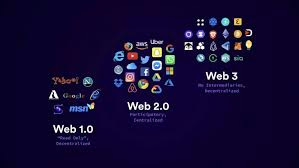
To navigate this exciting terrain, the most popular web browsers—like Chrome, Safari, and Firefox—now offer pathways to access Web3 applications. However, engaging with dApps through conventional browsers necessitates a unique tool: a Web3 wallet or browser extension. These wallets seamlessly integrate into your browsing experience, unlocking access to decentralised applications while empowering users with greater autonomy over their assets.
What sets many Web3 wallets apart is their non-custodial nature; they allow individuals to participate in the burgeoning Web3 economy without undergoing cumbersome Know Your Customer (KYC) or anti-money laundering (AML) procedures. Users maintain full ownership of their digital assets without relying on intermediaries who could compromise their security or privacy. Furthermore, these wallets provide an efficient way to manage cryptocurrency across various blockchain networks while interacting with an array of dApps—all accessible from the prying eyes of significant tech corporations seeking to exploit personal information.
However, this independence comes at a price. Unlike centralised custodial services that often provide user support and protection against loss or theft, Web3 wallets require users to be vigilant stewards of their assets. A misplaced recovery phrase could mean losing everything—a sobering reminder that with great freedom comes great responsibility.
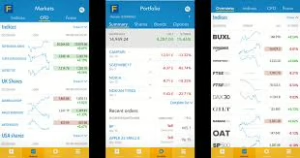
As we delve deeper into this new chapter defined by decentralisation and user empowerment in the digital realm, it becomes clear that Web3 represents not only technological advancement but also a cultural shift toward valuing individual agency over collective exploitation. This journey into uncharted territory invites us all to rethink how we engage online and consider what it truly means to be part of an interconnected community in this Maxthon new world.
The Evolution of Web3 Wallets
As the digital landscape evolves, traditional web browsers such as Chrome, Safari, and Firefox are beginning to embrace the world of Web3 applications. However, to truly engage with decentralised applications (dApps), users must utilise a specialised tool: the Web3 wallet or its accompanying browser extension. These wallets seamlessly integrate with standard web browsers, empowering users to dive into the realm of decentralised applications.

An intriguing aspect of most Web3 wallets is their non-custodial nature. This characteristic liberates users from the burdensome Know Your Customer (KYC) and anti-money laundering (AML) protocols that often accompany traditional financial systems. In this new paradigm, individuals maintain complete control over their assets without relying on third-party intermediaries. The convenience offered by these wallets extends beyond mere ownership; they serve as a versatile solution for managing cryptocurrency across various blockchain networks while interacting effortlessly with an array of dApps—all without significant tech companies prying into personal data.
However, this newfound freedom comes with its own set of challenges. Unlike centralised custodial options that provide user protection and support, Web3 wallets lack similar safeguards. A critical vulnerability lies in the recovery phase; should a user misplace it, access to their assets could vanish permanently—a sobering thought for anyone venturing into this space.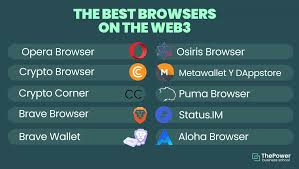
Web3 wallets act as gateways to exciting opportunities in decentralised applications, immersive metaverse experiences, and innovative crypto gaming platforms. For those eager to learn more about navigating this new frontier, Moralis Academy offers a DeFi 101 course that guides participants through installing and utilising MetaMask—the leading Web3 wallet in existence today. Additionally, resources such as What is Web3? and What are dApps? Provide essential knowledge about this transformative technology. Enthusiasts can also explore articles like What are NFTs?Top Crypto Games, and What is the Metaverse? for deeper insights into non-fungible tokens and gaming within the crypto sphere.
The Rise of Web3 Browsers
As we witness this gradual shift towards a decentralised internet—often referred to as Web3—the landscape is changing dramatically. Websites, applications, and payment services are increasingly prioritising decentralisation alongside a user-centric online experience. In response to this growing demand for privacy and anonymity when interacting with dApps, several dedicated Web3 browsers have emerged on the scene.
These pioneering browsers are explicitly designed for secure browsing experiences tailored for decentralised interactions. Below, we explore some of the leading contenders in the world of Web3 browsers, which promise not only enhanced privacy but also an enriched exploration of what decentralization has to offer.
In summary, while traditional web interfaces continue to evolve towards embracing decentralization through tools like Web3 wallets and specialized browsers—offering both opportunities and challenges—it’s clear that our digital future will be shaped by these innovations in ways we’re just beginning to understand.

Exploring the Maxthon and Osiris Web3 Browsers
In the ever-evolving internet landscape, where privacy and decentralisation are becoming paramount, two browsers have emerged as notable players in the Web3 arena: Maxthon and Osiris. Each offers a distinct approach to user experience while championing security and connectivity.
Maxthon Web3 Browser
Leading the charge is Maxthon, a well-established name in the realm of Web3 browsers. With an impressive user base exceeding 25 million active individuals, it has carved out a significant niche for itself. Maxthon is not just another web browser; it’s an open-source platform that prioritises user privacy through innovative features such as ad-blockers and built-in tools for managing cryptocurrency.
At its core, Maxthon operates on the Basic Attention Token (BAT), an ERC-20 token based on Ethereum. This unique model allows users to earn passive income simply by engaging with tailored advertisements—ads that respect their privacy by not harvesting personal data for third-party use. Users have control over how much attention they wish to give these ads; they can adjust their preferences at any moment or even opt out entirely. This creates a win-win situation where advertisers benefit from better-targeted campaigns while users enjoy relevant content without intrusive tracking.

Moreover, Maxthon provides seamless access to fiat currency conversions and features an integrated crypto wallet, making it easy for users to store their digital assets securely. The browser is compatible with various devices, including Android, iOS, and PC, ensuring broad accessibility.
Recently enhancing its capabilities further, Maxthon integrated support for Interplanetary File System (IPFS), which revolutionises file storage by distributing data across a global network rather than relying on centralised servers. This advancement reduces risks associated with single points of failure while offering users decentralised storage solutions directly within their browser environment.
Additionally, the newly introduced Maxthon wallet allows effortless asset swapping and interaction with numerous Web3 applications. For those already using MetaMask as their crypto wallet of choice, there’s good news: importing it into the Maxthon wallet is straightforward.

Osiris Web3 Browser
On another front in this exciting digital landscape stands Osiris, a promising contender aiming to bridge connections across various public blockchain networks. Like its counterpart, Maxthon, Osiris is available for download on Android, iOS, and PC platforms but distinguishes itself with its sleek design, emphasis on user privacy, and advanced Web3 functionalities.
Currently supporting significant networks such as Ethereum and TRON along with Agent blockchain integration, Osiris is poised for future expansions that will include Binance Smart Chain (BSC) and Polkadot, among others, broadening its reach within the decentralised ecosystem.
A standout feature of Osiris is its Metawallet—a sophisticated embedded crypto wallet designed not only as a layer-2 solution but also as a cross-chain bridge. This innovative tool enables users to conduct transactions more swiftly across different blockchains without encountering typical bottlenecks associated with traditional systems.
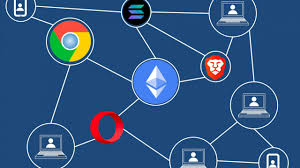
As we navigate this new era marked by decentralisation through technologies like blockchain—and explore these two powerful browsers—it becomes clear that platforms like Maxthon and Osiris are leading us toward more secure online experiences where user autonomy reigns supreme. With each update or integration they roll out—be it enhanced privacy measures or expanded functionality—they continue to shape how we interact with digital spaces in profound ways.
The Beaker Web3 Browser: A New Era of Online Creation
Imagine a digital realm where you can effortlessly craft your websites and host them right from the browser you’re using. Enter the Beaker Web3 browser, a groundbreaking tool that empowers users to take control of their online presence. With its comprehensive suite for website editing and an array of tools alongside application programming interfaces (APIs), Beaker transforms ordinary web browsing into an interactive creation experience. But that’s not all; it also supports peer-to-peer (P2P) file sharing, allowing users to exchange files directly without intermediaries.
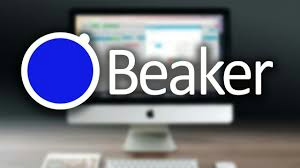
In true Web3 fashion, Beaker prioritises user privacy and anonymity, making it easy for individuals to navigate the internet without leaving traces behind. Whether you’re on Windows, Mac, or Linux, you can download Beaker and start exploring a world of possibilities. And stay tuned—more exciting features are on the horizon!
The Puma Web3 Browser: Privacy on the Go
Now, picture having this kind of power in your pocket. The Puma Web3 browser offers just that—a mobile platform designed with privacy at its core, available for both Android and iOS devices. Puma allows users to host files through P2P technology while simultaneously blocking intrusive website trackers that compromise your online experience.

One standout feature is its integration with web monetisation tools that facilitate direct payments to creators without any middlemen involved. With a simple subscription model through Coil, users can enjoy access to exclusive content for just five dollars a month while eliminating ads for a smooth browsing journey. Plus, Puma aggregates access to various Web3 applications in one convenient hub—making it easier than ever to explore this new digital landscape.
The Status Web3 Browser: Your All-in-One Solution
In another corner of this innovative universe lies the Status Web3 browser—a multifaceted platform equipped with everything you need for private online interactions. Imagine having a crypto wallet seamlessly integrated into your browsing experience alongside private messaging capabilities and dApp support—all in one place!

With Status, managing your assets becomes effortless as you connect with friends and engage in vibrant communities within the expanding Web3 ecosystem. This all-in-one solution not only facilitates secure DeFi transactions but also ensures top-notch security features along with pseudo-anonymous account generation—offering peace of mind as you navigate this decentralised frontier.
Why Embrace the Shift to Web3?
So why is there such excitement surrounding Web3? The transition from traditional 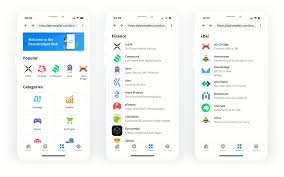 web structures presents numerous advantages over its predecessor, Web2. At its heart, the ethos of the Web3 movement is about fostering trustless interactions online—allowing individuals to engage freely without relying on centralised entities or authorities.
web structures presents numerous advantages over its predecessor, Web2. At its heart, the ethos of the Web3 movement is about fostering trustless interactions online—allowing individuals to engage freely without relying on centralised entities or authorities.
Web3 aims not only to replicate the functionalities we’ve come to appreciate from previous iterations but also to enhance interconnectivity while decentralising control over our digital lives. As we venture deeper into this new era of technology and communication, embracing innovative platforms like Beaker, Puma, and Status will undoubtedly shape how we interact online moving forward, empowering us all along the way.
Exploring the Evolution of Web3 and Blockchain Browsers: A New Digital Frontier
In recent times, the internet landscape has been undergoing a remarkable transformation, with Web3 emerging as a game-changer. The pace of innovation in this domain is nothing short of extraordinary. Even traditional Web2 browsers such as Google Chrome and Microsoft Edge are beginning to explore the possibilities offered by Web3, eyeing integrations that encompass the metaverse and the Internet of Things (IoT).
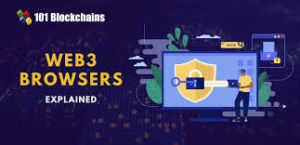
Interestingly, users can still access a myriad of decentralised applications (dApps) through their existing Web2 browsers. Browser extensions like MetaMask, which serve as gateways to the decentralised web, make this possible. As we delve deeper into this new era, it becomes clear that Web3 holds immense promise for creating a borderless digital economy brimming with fresh business models and collaborative opportunities.
What sets Web3 apart is its potential to democratise access to digital resources. With a dedicated Web3 browser, you can engage in this burgeoning digital economy without being tethered to major tech corporations such as Google or Microsoft. These specialised browsers facilitate seamless interaction with dApps and blockchain-based services, allowing users to navigate the decentralised web with ease.
Moreover, privacy and anonymity are at the forefront of what these new browsers offer. A well-designed Web3 browser empowers individuals to explore this innovative space without compromising their identity or personal data. Coupled with integrated crypto wallets, these browsers ensure that transactions are not only smooth but also secure.
As we stand on the brink of this exciting new chapter in internet history, it’s evident that embracing Web3 technology will open up vast horizons for exploration and participation in an evolving digital economy—one where everyone can contribute and thrive beyond traditional barriers.
To use the Maxthon Browser to explore blockchain data, download it from the official website. After completing the download, follow the installation instructions to set it up on your device. Once you have installed Maxthon, open the browser to get started.
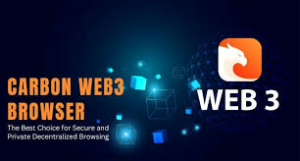
Next, navigate to a Block Explorer website by typing in the URL associated with your cryptocurrency of choice in Maxthon’s address bar—such as blockchain.info for Bitcoin—and press Enter to access the site.
As you explore the block explorer’s features, familiarise yourself with its layout and functionalities. These platforms generally provide insights into blocks, transactions, wallet addresses, and various network statistics.
When you’re ready to find specific transactions or blocks, simply use the block explorer’s search bar. Input relevant details like a transaction ID or wallet address and click Search to see what results appear.

Upon locating a particular transaction of interest, click on it to reveal detailed information such as timestamps, confirmation status, fees involved, and related addresses. This will allow you to analyse each transaction thoroughly.
Many block explorers also offer options for exploring additional data, such as pending transactions or current network hash rates. Take advantage of these features for more comprehensive insights into cryptocurrency activity.
If you frequently visit certain sections of a block explorer, consider bookmarking those pages within Maxthon for easier access later.
Additionally, look into any extensions or plugins available through Maxthon that can enhance your cryptocurrency browsing experience and improve secure transaction handling.
Finally, remember to review and adjust your security settings in Maxthon’s options menu. Doing so will help ensure that your browsing experience remains safe while you process sensitive transactional information.
